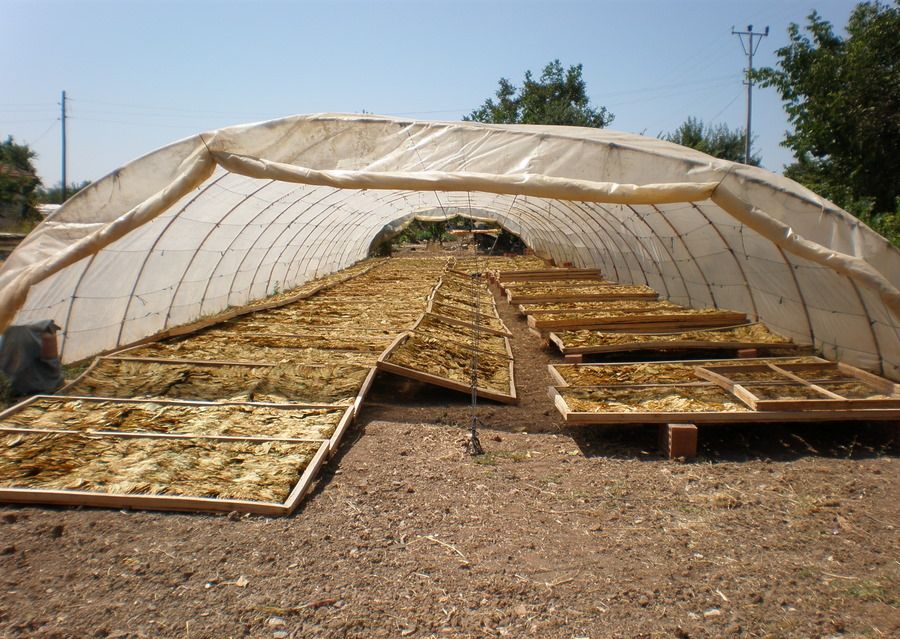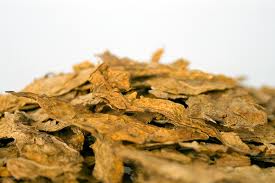 Flue-cured Tobacco
Flue-cured Tobacco
The most common curing process is known as flue-curing. Used mainly in the manufacture of cigarettes, the most common type of flue-cured tobacco is Virginia . This tobacco is also known as ‘bright tobacco’ because the heat-drying process gives the leaves a bright, golden colour. Originally from the south-eastern U.S. state of the same name, it is today the most grown tobacco variety in the world.
Flue-cured tobacco is dried in a closed building with furnace driven heat directed from flues or pipes that extend from a furnace into the barn. The temperature of the furnace is gradually raised until the leaves and stems are completely dried. Flue-curing takes about a week and fixes the natural sugar of the leaf, which has a high sugar and a medium-to-high nicotine content.
Today, many farmers find that bulk curing flue-cured tobacco is far more cost-effective. Racks of tobacco are placed in bulk barns where heat and ventilation are controlled while air is forced through the leaves.
Flue-cured varieties require warm weather, humidity, light rainfall and a sandy, loam soil for their four-month growing season.
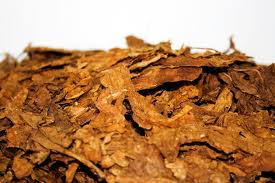 Air-cured Tobacco
Air-cured Tobacco
Some tobacco leaves are air-cured following their harvest. Air-cured tobacco is traditionally cured hanging in structures with a roof, but with open sides to allow air to freely circulate. As with flue-curing, the aim of air-curing is the timely removal of moisture from tobacco leaves. This process takes four to eight weeks: If cured too fast, the leaf will become patchy, if cured too slowly, the leaf will rot away.
Commonly, air-cured tobacco is subdivided into dark air-cured and light air-cured tobacco. Burley is the second most popular tobacco in the world, belonging to the light air-cured variety. Burley, also known as White Burley tobacco, is primarily used to make cigarettes and aromatic blends, whereas dark air-cured tobaccos are mainly used in the production of chewing tobacco and snuff.
Burley is a slightly smaller plant than the flue-cured Virginia type, but with similarly broad leaves. Once picked, its leaves are dried naturally – or ‘air-cured’ – without the use of extra heat. This gives the leaves a light brown to mahogany appearance and very low sugar content. Burley tobaccos are somewhat cigar-like in taste and appearance, lending themselves to the production of flavoured, blended cigarettes commonly referred to as “American”. Burley tobacco can be grown in limestone soils and requires only light fertiliser.
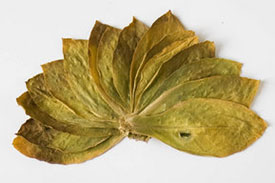 Sun-cured Tobacco
Sun-cured Tobacco
A comparatively small amount of tobacco is sun-cured. Leaves are exposed to the sun to remove most of their moisture before being air-cured to complete the process. Of all sun-cured tobaccos, the best known are the so-called Oriental tobaccos of Turkey , Greece , in the area where before used to be yoguslavia, and Balkans.
A more labour-intensive product to harvest, Oriental tobacco is characterised by high aroma from small leaves, being low in both sugar and nicotine.
The leaves are mostly sun-cured. Usually, the larger the leaf, the milder the aroma. Hence Oriental tobacco is regarded as expensive to harvest by many tobacco manufactures. Oriental tobaccos are often grown in poorer soils in southern Europe and the Middle East.
Whereas after other curing processes tobacco is exposed to air to standardise the moisture content of the tobacco or ‘redry’, Oriental tobaccos are stored in bales and allowed to ferment. After storage, moisture is added to this type of tobacco. Pure – Turkish cigarettes contain 100% unblended Oriental tobacco – or blended, Oriental tobacco is mostly used in cigarettes, cigars, pipe, snuff or chewing tobacco.
TYPES OF LEAF in BLENDS
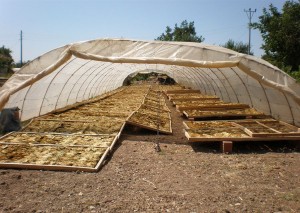 One tobacco plant can produce several grades of leaf. For example, the leaves at the top of the plant are more exposed to the sun than the ones at the bottom.
One tobacco plant can produce several grades of leaf. For example, the leaves at the top of the plant are more exposed to the sun than the ones at the bottom.
Grades are generally determined by a leaf’s position on the plant, its thickness, aroma, graininess and colour (lemon, orange and mahogany are the most typical) and the quality and maturity of the plant. The quality of the various grades is determined by the leaf’s ability to withstand

